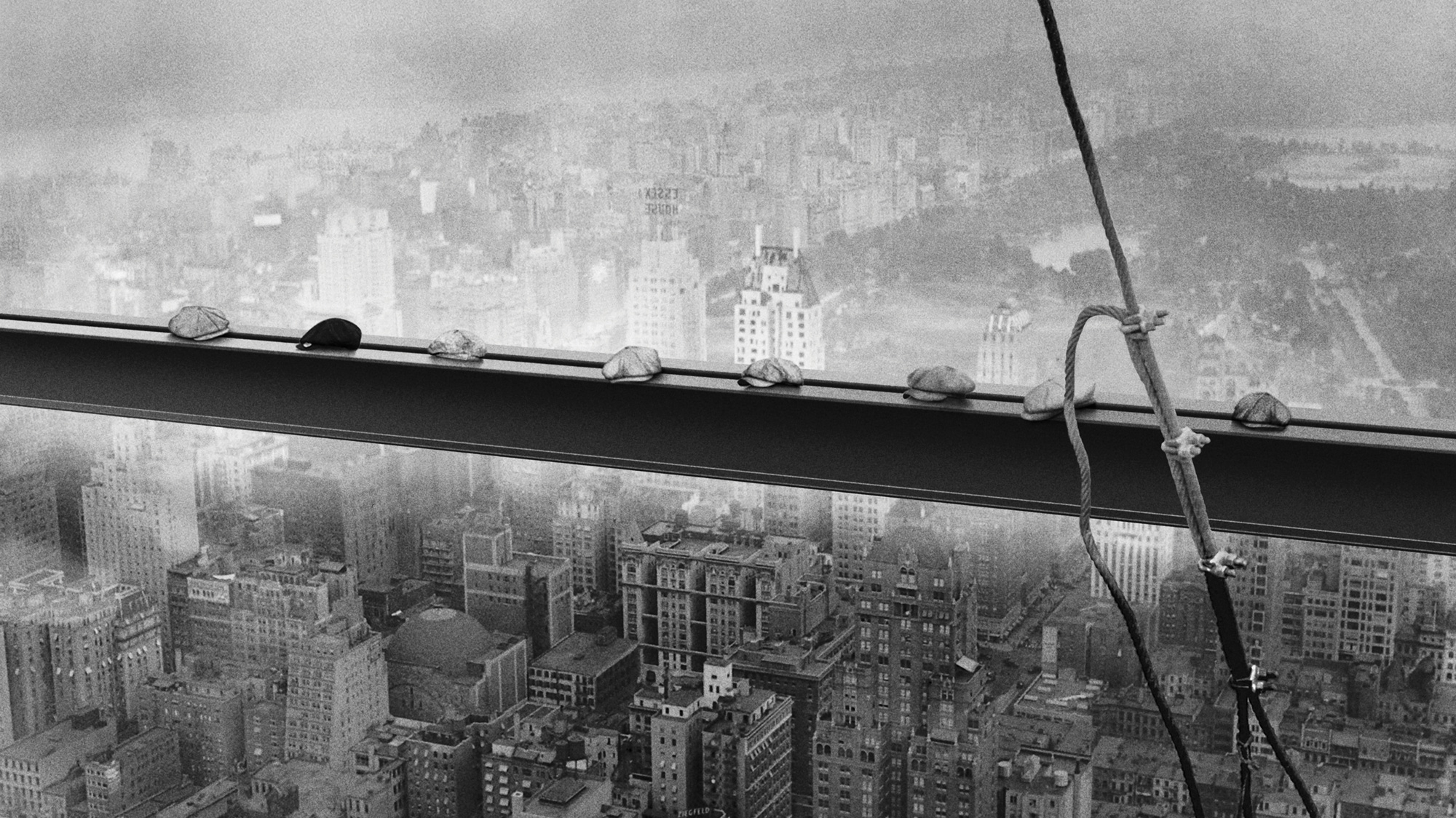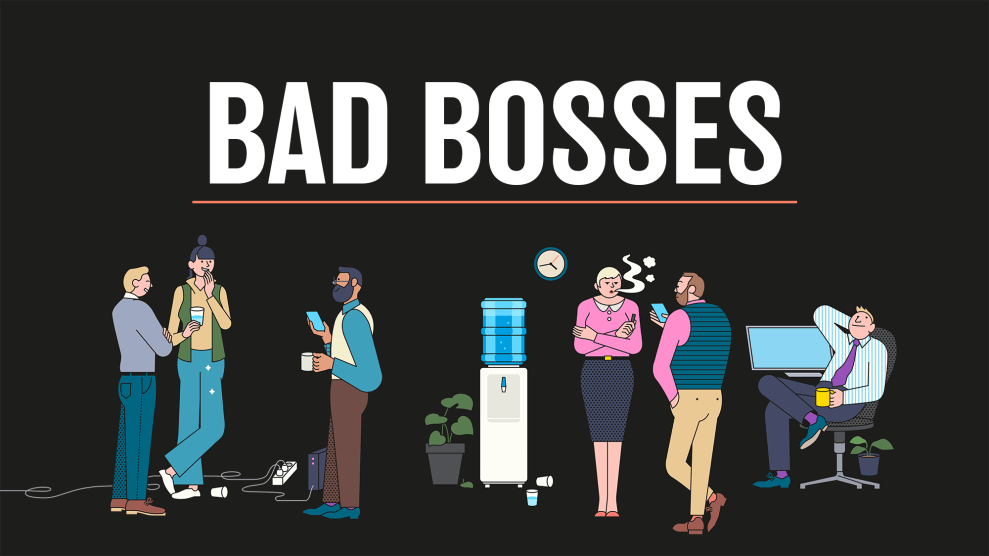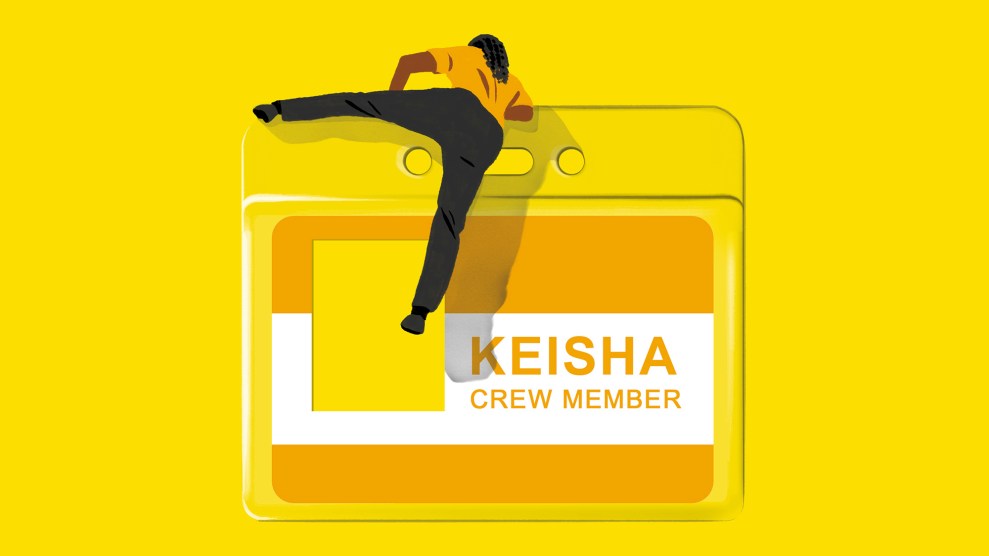In our January + February 2022 cover story, we attempted to answer a simple question: What the hell happened to labor since the pandemic began? It wasn’t one thing. But this package—through a series of worker stories as told in their own voices, interviews with experts, and dissections of media narratives—attempts to make sense of the moment. You can find the full package here.
A few weeks after the end of World War II, New York City came to a standstill. Thousands of elevators hung without operators, doors stood without doormen, and buildings languished without repairmen. Business districts closed down; the Garment District emptied out. Almost all deliveries other than the mail stopped coming into Manhattan. America’s commercial center was shuttered. “Make yourselves comfortable,” one union officer publicly warned. It wasn’t a government shutdown; it was a strike—one that started with the elevator operators, doormen, and maintenance workers, and spread to other unionists across the city. (“Fur workers do not want any scabs to run elevators in fur buildings,” declared one sympathy striker.)
While their collective action was monumental, it was also somewhat routine. After the war, these kinds of strikes were de rigueur: In 1946, 4.6 million people—nearly 10 percent of the American workforce—took to the picket line. General strikes rocked entire communities across the country, from Lancaster, Pennsylvania, to Oakland, California, to Rochester, New York. “It was after the war and I think we needed to get our share,” one Oakland striker later explained. “Industry had sure made theirs during the war.”
Many of the country’s major waves of strikes have occurred like this, as postscripts to shattering events of the 20th century—in 1919, 1934, 1946. Each catastrophe redefined our sense of “normalcy.” It left workers wondering why they had to sacrifice so much for their country—or why some people got so much while they worked for scraps.
A strike usually results from a specific conflict over employment. One group of workers wants one employer to pay better wages or improve conditions. Mass strikes, however, occur when the push for a contract is wrapped up in a larger political moment. Rosa Luxemburg, the turn-of-the-century socialist revolutionary, said that “to go house-to-house canvassing” for a mass action would be “idle and profitless and absurd.” Instead, history—whether war or economic collapse or virus—presses in. As an old world splinters, a new one suddenly must be made.
In the postwar era, this resulted in large strikes from unions nearing the peak of their strength. But today, with our dreadfully low rates of unionization, long-stagnant wages, and threadbare social safety net, something else has happened: A lot of people have up and quit. In 2021, one report estimates, one in four workers chose to leave their jobs. In November alone, about 4.5 million people quit—a staggering 3 percent of the total US workforce. (Month after month last year, new record quits occurred.) The past two years saw a hodgepodge of resistance: some organized labor action, but also early retirements, forced “labor shortages,” fast-food walkouts, general malaise, burnout, remote work, parents dropping out to care for children. Together, they formed something less like a global worker revolt than a wildcat year of “enough.” Millions of people, by choice or from unrelenting pressure, decided they were done.
And it kind of worked. Wage growth—especially among those who switched jobs, and particularly among the bottom rung of workers—jumped. The average pay for those working in leisure and hospitality increased more than 12 percent. This is how things are supposed to work. As Guy Berger, an economist at LinkedIn, told me, there are “very few things that help manifest a healthy market economy” on a mass scale more than workers having options.
Across conservative media, this tight labor market has been recast, for moral outrage, as Americans made lazy by unemployment benefits. Warnings of a “labor shortage” fueled calls to stop government spending. Trump’s transportation secretary, Elaine Chao, even asked for Americans to do their “patriotic” duty to work a crap job for low pay. Democratic Sen. Joe Manchin has fretted about society getting sucked into an “entitlement mentality.”
But they are missing the point. Quits are a Janus-faced piece of economic data—a sign of how bad our work politics have gotten, and also of hope that they could be better. It signals that people are fed up but also confident they can find new jobs, often better-paying ones. It can feel radical after living under the austerity provisions that have been a hallmark of neoliberal governments since the 1970s—which, as Amelia Horgan noted in Lost in Work: Escaping Capitalism, meant that “we, almost always, need a job more than a job needs us.”
For the past 40 years, MIT economist David Autor wrote in the New York Times, the United States has “generated vast numbers of low-paid, economically insecure jobs.” And given that we haven’t invested much in social infrastructure, some people are dropping out of the workforce because they are falling through the holes in our social safety net. Recent reporting shows workers are pissed off and burned out. This year has seen more vigorous organizing; there have been strikes and other actions by entertainment workers, John Deere employees, and Kaiser Permanente nurses. But it’s spread beyond the organized: From the white-collar workers reconsidering their life priorities, to the service industry staff tired of dealing with terrible customers, to low-wage laborers finding solidarity against the shit conditions laid bare by the pandemic, people are broadly opting out.
Betsey Stevenson, an economist at the University of Michigan, told me this unrest has created increased “upward wage pressure,” likening the quits to a mass union contract negotiation. Workers are “creating this sort of collective bargaining situation,” she said, united by “a year of examining our life, and whether we think we’re being treated fairly, and whether we think we’re doing what we want to do.”
In some ways, quits are what the Biden administration needs. They prove his belief that a government can work for the people. While it was his predecessor who signed the CARES Act, President Biden (and America) has benefited from the degree of power it gave workers to choose, to put it bluntly, between work and death. As labor economist Lawrence Katz explained to the Harvard Gazette, “the expansion of the social safety net and the stimulus payments during the pandemic period” allowed many people the possibility to get pissed off. This, combined with the Federal Reserve’s resolve to keep money flowing instead of cracking down to crush inflation, has allowed the market to stay hot. Job openings are up. Savings—bolstered by pandemic-related stimulus checks and economic policies—enabled some to go without a job for a few months. This cushion is helping people quit. Biden’s response to complaints about the labor shortage lays out his hope for what businesses will have to do for workers: “Pay them more.”
Rising wages, though, only go so far: a broken economy half-fixing itself. By many measures, we are living through a remarkable moment in which the economy is already growing after a catastrophic recession; it took years after the 2008 crash to return to similar labor power. But this has not been an equal-opportunity uprising. The aforementioned cushion is unevenly distributed. As Enrique Lopezlira, director of the University of California, Berkeley’s Low-Wage Work Program, explained to me, “if you’re an older worker with family responsibilities, switching [jobs] might not be as easy because there might be transportation issues, there might be scheduling issues, and maybe day care issues.”
Quitting is, in some ways, the sad resort of an individualized working class. Unorganized, you can quit. But the institutional changes needed—from stronger labor protections to child care policies—await better contracts or legislative victories. Consider the 1970s, a decade often derided as the death knell of worker solidarity. In her book Knocking on Labor’s Door, former union organizer and academic Lane Windham explored how an “individual rights consciousness,” birthed from civil rights–era organizing, led an ignored working class—often young Black women—to take action. Yet it did not have the impact of the strike wave of the 1940s because the legal, economic, and social conditions under which it unfolded had changed. Part of the shift was that employers, many in the South, increased resistance: Illegal firings “more than doubled” in the 1970s and ’80s, Windham noted. So workers who were trying to unionize were also losing. That’s one reason why the era often gets misremembered as the time when labor lost its way; the more complicated reality is that there were worker revolts—a lot of them, in fact—but their efforts were blocked and dismissed, which obscured the fight and power of the labor movement for decades.
We risk something similar now: an overhyping of quitting as revolution, and underplaying its ability to show workers’ agency. If you read enough quitting stories, you’ll find how that individual decision—well, this isn’t worth it—came about because of a unique confluence of recent events and policies that allowed workers, for once, to imagine a better way. We should be skeptical about just how much lasting change will come from the actions we’re seeing today, but also keenly aware that some things have already changed—and that workers, in some sort of crazy-quilt general strike, did fight back.
In either case, we know to prepare for a backlash. In 1947, after the wave of postwar strikes, Republicans won Congress for the first time since the Great Depression. One of their first moves was to implement a semi-prohibition on labor actions: the Taft-Hartley Act. It ushered in our era of so-called right-to-work laws, bans on sympathy strikes, and firms being able to push anti-union propaganda on their workers in the name of “free speech.” That law is still at the core of what’s suppressing labor today. And, in some ways, it set the groundwork for the past two years: Quitting is one of the few actions many have left.
Studs Terkel once wrote that work stories are “about violence—to the spirit as well as to the body.” So yes, perhaps this moment will end in backlash akin to Taft-Hartley. We’ve already seen hysteria from moderate Democrats and Republicans over inflation—and calls to halt the economic policies that enabled quitting in the first place. But maybe—hopefully—there’s still another way, another future in which workers’ wages will continue to increase and they will win vital institutional reforms. Either way, it is worth remembering when workers cheered each other walking off their jobs, and how their stories offer glimpses into capitalism’s banal injuries. It was an atomized insurgence, but there was a togetherness in the way it added up. It was the Big Quit.

















